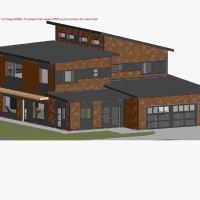Welcome! Here are the website rules, as well as some tips for using this forum.
Need to contact us? Visit https://heatinghelp.com/contact-us/.
Click here to Find a Contractor in your area.
If our community has helped you, please consider making a contribution to support this website. Thanks!
Where is the water coming from
Options
Comments
-
I've taken out all drywall around shower and all line in the area. All dry. Everything above header is dry and had been dry for days0
-
Can you send us more photos.Sean Wiens0
-

0 -
So have you been using the shower, or not? Time to narrow down what’s leaking with everything dried out.0
-
Do you mean the wall header is wet? Above the shower or on floor level below? Is there a another floor level below the shower?Sean Wiens0
-
Is the area where the carpet was wet, in the other room, a common wall to that shower wall?0
-
-
Looking at the tub now and thinking about these wet spots in my carpet. It's all in line with main going outside.I'm thinking its damaged and the radiant heat is heating up the water and causing condensation and its trying to escape into the air0
-
I assume the wet spots line up with where the water meter is located as well? Do you know what material the supply pipe is? Copper? Pex? Iron? Also it could be a broken waste pipe. If the wet spots don't line up with the water meter, check to see if it lines up with a waste clean-out.cons20 said:Looking at the tub now and thinking about these wet spots in my carpet. It's all in line with main going outside.I'm thinking its damaged and the radiant heat is heating up the water and causing condensation and its trying to escape into the air
0 -
If your water meter is outside in a pit, you could make sure all fixtures are off and watch the small flow indicator on the meter.
If the meter is inside the house, then with all water off, a screw driver point against the incoming pipe before the meter with the handle stuck in your ear may allow you to hear water flowing.1 -
looks to me like it's definitely coming from within the shower probably the caulk bead where the walls need the base . If you can just don't use the shower for a week or two and put a fan or heater in the space to dry it out. If the water dries up then it's not your radiant0
Categories
- All Categories
- 87.3K THE MAIN WALL
- 3.2K A-C, Heat Pumps & Refrigeration
- 61 Biomass
- 428 Carbon Monoxide Awareness
- 120 Chimneys & Flues
- 2.1K Domestic Hot Water
- 5.8K Gas Heating
- 114 Geothermal
- 166 Indoor-Air Quality
- 3.7K Oil Heating
- 77 Pipe Deterioration
- 1K Plumbing
- 6.5K Radiant Heating
- 395 Solar
- 15.7K Strictly Steam
- 3.4K Thermostats and Controls
- 56 Water Quality
- 51 Industry Classes
- 50 Job Opportunities
- 18 Recall Announcements

